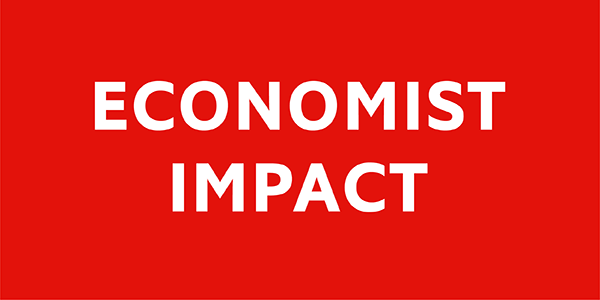ARTICLE
Custom content is written, produced or curated by either a sponsor or by EI Studios, the custom division of Economist Impact. Such placements are clearly labelled as Advertisement, Advertisement feature, Sponsored content, Sponsor perspective, or words to that effect wherever they appear on our website or apps. Neither The Economist news and editorial team, nor Economist Impact’s independent experts, have any involvement in the creation of this content.
Better known for its finance, tourism and logistics industries, the city is putting innovation front and centre of its development strategy
Hong Kong’s quest to become an international innovation and technology (I&T) centre is reaching a tipping point with the Special Administrative Region’s (SAR) multi-pronged development strategy, launched in December 2022. This marshals the resources and sets the development trajectory required to create new industries, diversify the economy and fuel sustainable growth.
“The Hong Kong Innovation and Technology Development Blueprint provides a direction and the tools to attract talent and move people out of their comfort zone to do research and development (R&D),” says Albert Wong Hak-keung, CEO of Hong Kong Science and Technology Parks Corporation (HKSTP), a statutory body set up in 2001 as an ecosystem to foster I&T development and operate I&T facilities, including the Hong Kong Science Park, three InnoParks and the fintech-focused InnoCentre, which are home to around 1,300 enterprises.

Hong Kong Cyberport

Hong Kong Science Park
Chinese President Xi Jinping’s visit to the Hong Kong Science Park in June 2022 demonstrated the importance Beijing places on Hong Kong’s I&T development. There is strong impetus for Hong Kong to deepen I&T cooperation with the mainland and develop into an international I&T centre.
That’s the government’s lofty ambition, and the challenges are many. They include diversifying the economy’s structure, enhancing the commercialisation of innovations, expanding land supply for I&T uses and increasing human capital.
For instance, according to the development vision set out in the blueprint, Hong Kong aims to double its population of I&T practitioners to no fewer than 100,000 by 2030.
“Talent recruitment is a bloodbath; that’s not just in Hong Kong, but across the world,” says Kyle Wong, CEO and co-founder of PanopticAI, a healthcare startup founded in 2020 that provides AI-vision software which captures information via cameras to monitor users’ health.
"I'm a firm believer that Hong Kong really is a place with a lot of opportunities and resources, if you put in the work."
Kyle Wong, CEO and co-founder of PanopticAI
Raising the bar
Intended to overcome these challenges and build on Hong Kong’s numerous advantages, the blueprint’s aim is to enhance the city’s I&T ecosystem, foster new industrialisation, enlarge the I&T talent pool, propel development of the digital economy, facilitate the SAR’s transformation into a smart city and integrate it into the national development strategy.
An indication of the Hong Kong SAR Government’s (HKSARG) commitment came when $1.28 billion (HK$10 billion) was earmarked for a Research, Academic and Industry Sectors One‑plus Scheme, to be rolled out later this year, and which will enhance collaboration among the government, industry, academia and research sectors.
The initiative will fund, on a matching basis, at least 100 university research teams with potential to become successful startups to transform their R&D outcomes and initiate related commercialisation processes. Apart from this initiative, early-stage startups can also benefit from existing funding sources, such as the $256.4 million (HK$2 billion) Innovation and Technology Venture Fund, HKSTP’s Corporate Venture Fund and the Cyberport Macro Fund, which provide resources for enterprises to scale up.
“I applied for every subsidy going, no matter the amount, which enabled our company to start out with small running costs because most of them were covered by reimbursements,” says Kyle Wong.
The HKSARG plans to increase the number of startups located in the city’s co-working spaces, incubators and accelerators from 3,755 in 2021 to about 7,000 in 2030, and expand the ratio of GDP expenditure on R&D to 2 percent from 0.99 percent in 2020.
More startups will require more space. To accommodate the anticipated uptick in startups, the Hong Kong-Shenzhen Innovation and Technology Park (HSITP) is under construction at the 87-hectare Lok Ma Chau Loop. It will be rolled out in phases starting from end-2024. The HKSARG is also accelerating development of the San Tin Technopole technology and innovation hub in the Northern Metropolis, an urban development in north Hong Kong near the boundary with tech powerhouse Shenzhen.

(Illustration) Hong Kong-Shenzhen Innovation and Technology Park
Fintech in focus
Playing to the SAR’s strengths as an international finance hub, Hong Kong’s fintech segment demonstrates the potential supportive policies and sophisticated infrastructure can unleash.
The number of fintech companies operating in Hong Kong expanded to some 800 in 2022 from 180 in 2018, including homegrown unicorns ZA International, parent of ZA Bank, online financial company WeLab, and cross-border payment service provider Airwallex.
Launched in June 2021, the Hong Kong Monetary Authority’s (HKMA) Fintech 2025 initiative was formulated to encourage banks to fully digitalise their operations and adopt emerging technologies like AI, big data and machine learning, prepare the way for Central Bank Digital Currencies (CBDCs), enhance the SAR’s data infrastructure and foster a fintech-savvy workforce.
Launched in 2018 and located in the Cyberport, home to over 1,900 startups and technology companies in Hong Kong, business-to-business digital payment company Reap is a beneficiary of the initiative.

2% by 2030
Targeted share of GDP expenditure
on R&D
“Having a road map provides visibility, which gives us a lot more confidence and flexibility in terms of our internal planning. If we didn’t have visibility, we would have to plan haphazardly, guessing what we can or cannot do next,” says Reap co-founder Daren Guo, who moved to Hong Kong from Singapore in 2018 to set up the business.
Further visibility was provided in October 2022, when the HKSARG issued a policy statement on the development of virtual assets, in which it outlined its intention to implement a new licensing regime for virtual asset service providers, and its vision for a central bank digital currency, virtual asset exchange traded funds, stablecoins and property rights for tokenised assets.
In addition to enhanced policy support for fintech firms, Hong Kong’s stock exchange in March 2023 unveiled lower listing requirements for specialist technology companies, to bolster the bourse’s attractiveness to startups looking to raise capital.
“Having a road map provides visibility, which gives us a lot more confidence and flexibility in terms of our internal planning.”
— Daren Guo, co-founder of Reap
Synergistic neighbours
A key factor that will to a large extent determine the realisation of Hong Kong’s I&T roadmap is the SAR’s position in the increasingly integrated Guangdong-Hong Kong-Macao Greater Bay Area (GBA).
According to the World Intellectual Property Organisation’s Global Innovation Index, the Shenzhen-Hong Kong-Guangzhou region ranks second as a science and technology cluster globally.
Deepening cooperation between the GBA’s cities, such as enhanced ties between higher education institutions, provide opportunities to boost the level of talent available for Hong Kong’s I&T enterprises.
“Nine out of 10 startups or technology companies from other parts of the world that come to Hong Kong do so as it’s a stepping stone to the GBA,” says Albert Wong Hak-keung.

Guangzhou

Hong Kong

Shenzhen
Going global
Better known globally for its logistics, tourism and financial and professional services sectors, Hong Kong is pulling out the stops to build an international reputation for its I&T capabilities.
In February this year, chief executive of the HKSAR John Lee visited Saudi Arabia and the United Arab Emirates (UAE) on a week-long trip to promote Hong Kong as an investment destination and to attract Middle Eastern talent and investment. Cyberport also signed a Memorandum of Understanding with the Dubai Future Foundation in the UAE to encourage technology companies in the two markets to explore expansion in the respective regions.
“Nine out of 10 startups or technology companies from other parts of the world that come to Hong Kong do so as it’s a stepping stone to the GBA.”
— Albert Wong Hak-keung, CEO, Hong Kong Science and Technology Parks Corporation
Votes of confidence
Recent efforts build on Hong Kong’s foundations that make it a highly desirable place to do business. These include its open capital account, low taxes, sophisticated infrastructure, light-touch regulation, large pool of investors, and its location at the heart of rapidly developing Asia as well as its position as a super-connector to and from mainland China.
Comprehensive and strategic government support, Hong Kong’s maturing startup ecosystem and increasing integration with mainland China are attracting the attention of industry giants.
For example, Microsoft in June 2022 launched its Startup Founders Hub in Hong Kong, a programme that provides startups across Asia with free access to technology, and Roche and HKSTP announced in January 2023 a partnership to support life science startups in Hong Kong and the mainland.
“I’m a firm believer that Hong Kong really is a place with a lot of opportunities and resources, if you put in the work,” says Kyle Wong.
EXPLORE MORE

Finance
video
Hong Kong: a global connector of finance
As a global financial centre, Hong Kong links mainland China and the rest of the world with its financial services institutions, banks, regulators and prominent pool of talent. It is also a pioneer in the green finance market.
Watch video

Arts & Culture
video
Hong Kong: art from the heart of Asia
Hong Kong's arts and cultural scene is flourishing, with a diverse variety of artists, museums and galleries that add colour to a thriving hub at the intersection of East and West.
Watch video

Arts & Culture
infographic
Hong Kong rolls out red carpet for art
This city has developed a vibrant cultural ecosystem, and with ambitious government initiatives well underway, many focused on nurturing a new generation of local artists, it's set to reach new heights as a global arts powerhouse.
See infographic

Technology
video
Hong Kong: an ecosystem for innovators
Innovators will find that magic can happen in Hong Kong, thanks to the start-up hub's vibrant ecosystem that enables diverse entrepreneurs from around the world to make connections, solid infrastructure, and ample opportunities found in the Greater Bay Area cities across the border.
Watch video

Arts & Culture
article
Hong Kong, a hotbed of creativity
Improved access to arts education, supportive government policies and impressive new infrastructure are cementing Hong Kong as a top destination for artists and art enthusiasts alike.
Read article

Finance
infographic
Hong Kong’s green finance ecosystem blossoms
Uniquely positioned as an international financial centre and a super-connector to mainland China’s burgeoning demand for green investment, Hong Kong is playing a pivotal role in the world’s journey towards sustainability.
See infographic

Finance
article
Hong Kong pioneers new era of green finance
A new carbon credit market, rising green debt issuance and its role as a finance facilitator under the Guangdong-Hong Kong-Macao Greater Bay Area are propelling Hong Kong’s development as a green finance hub.
Read article

Technology
infographic
Hong Kong, a world-leading dynamic startup ecosystem
The combination of its ideal location, strong economy, deep capital markets, and pro-business policies is turbocharging Hong Kong’s startup ecosystem. The SAR’s rapidly expanding network of incubators and accelerators, and large pool of angel investors and venture capitalists, provide startups with all they need to scale up.
See infographic
Back to top








